Written and photographed by Maddy Bartsch
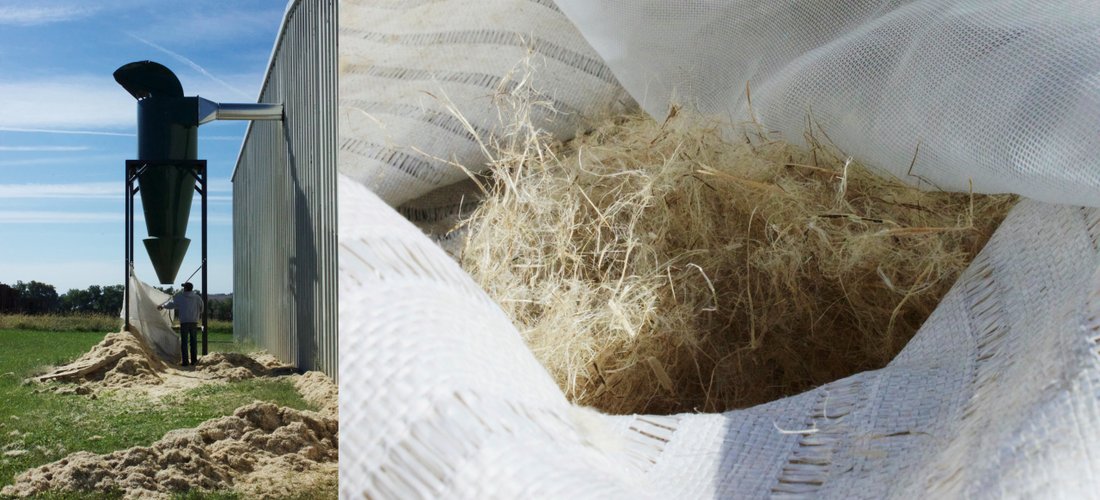
If you were to ask me what Nebraska is known for, I’d probably guess corn or football, neither of which I can say much more about. As I drove down from Minneapolis to Omaha for the first time, I’d likely add ‘long stretches of highway!’ to that list. But upon reaching my destination, it would seem Nebraska has extraordinary qualities you might not see from simply glancing out the window.
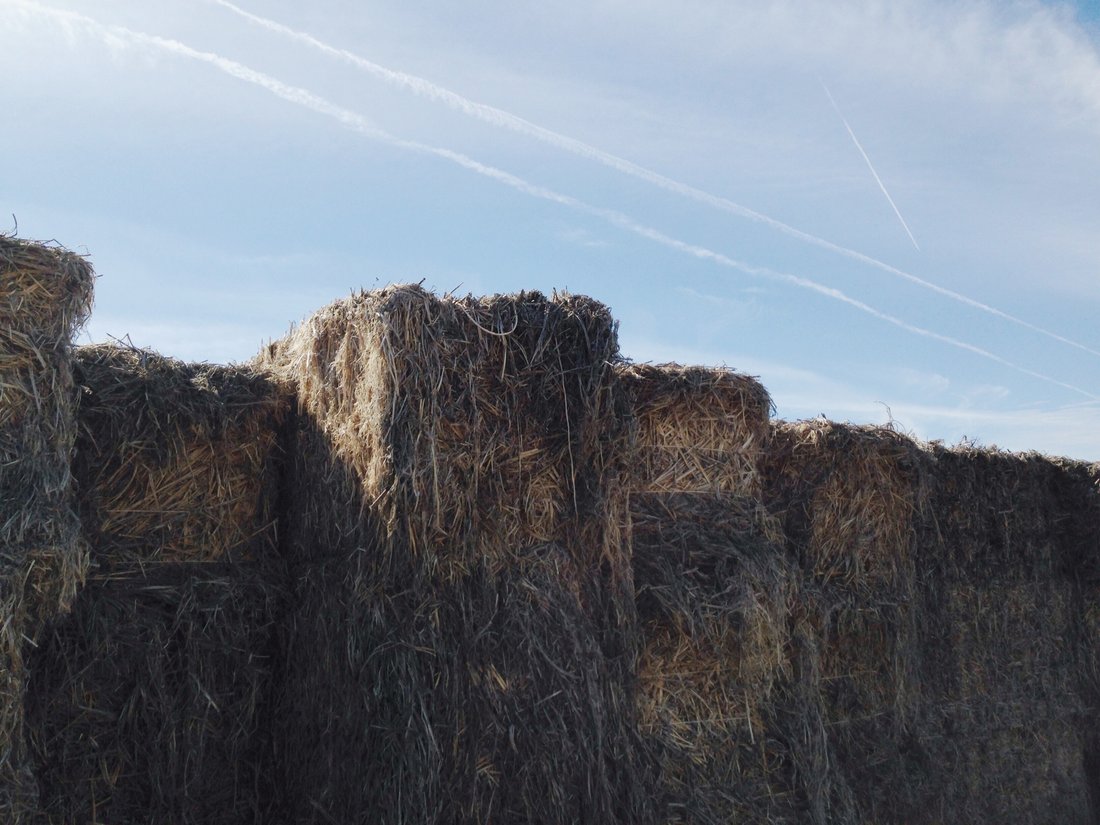
As I pulled into what looked like an industrial park, with trucks rolling in and out from a nearby business, the building I approached was unassuming and virtually blank from the outside. I parked in the grass and was struck by the immensity of the clear blue sky above me. Perhaps the past few years of living in a city has amplified my appreciation for the open sky, but whatever it may be, at this moment in time, it was striking. Massive bales of what looked like hay were stacked in front of the building, reaching into the sky three or four bales high, serving as a beautiful contrast to the sky but also hinting at what this blank canvas of a building was hiding inside.
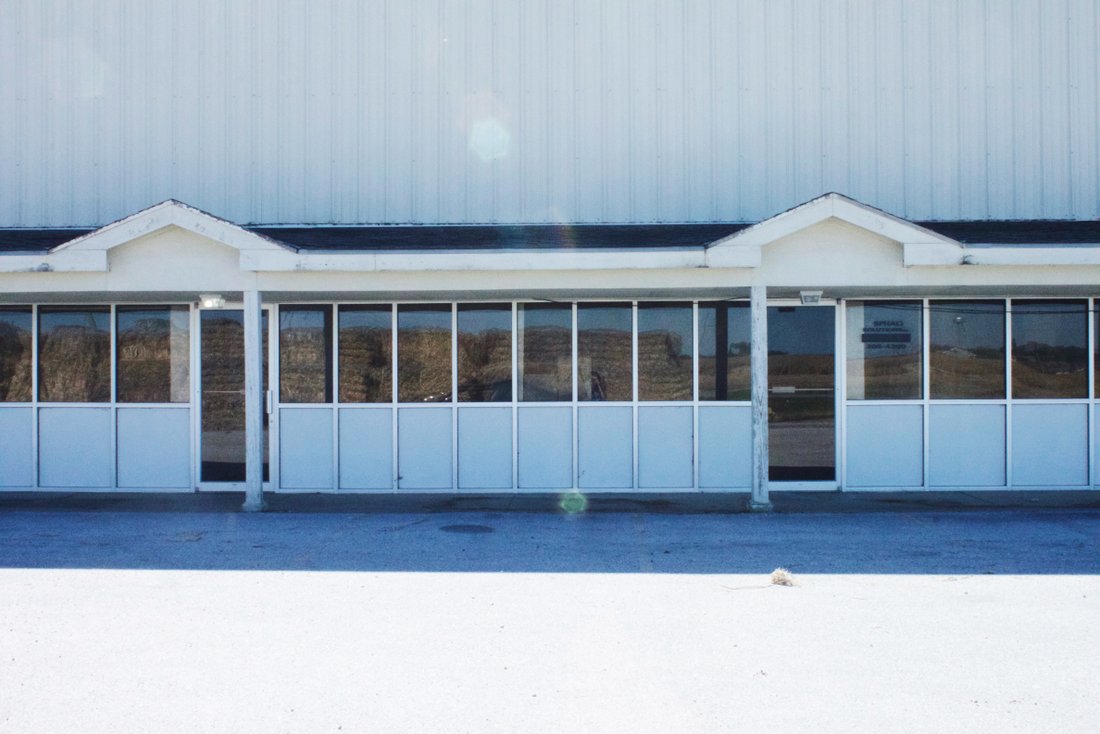
BastCore is located in the greater-Omaha area and serves the fiber supply chain in an altogether unique way, through the processing of hemp. Outside, those were actually bales of hemp, harvested from across the country in states like Kentucky, Colorado, and Minnesota, which I was invited to see in person for BastCore’s open house at the end of September.
Inside this large warehouse is where BastCore’s operations take place. Across the spacious warehouse, a wall of hemp bales lines the back of the building. Directly across from the raw materials sits equipment for finishing hemp. The remaining half of the building is taken up by a giant machine specially made for processing bast fibers.
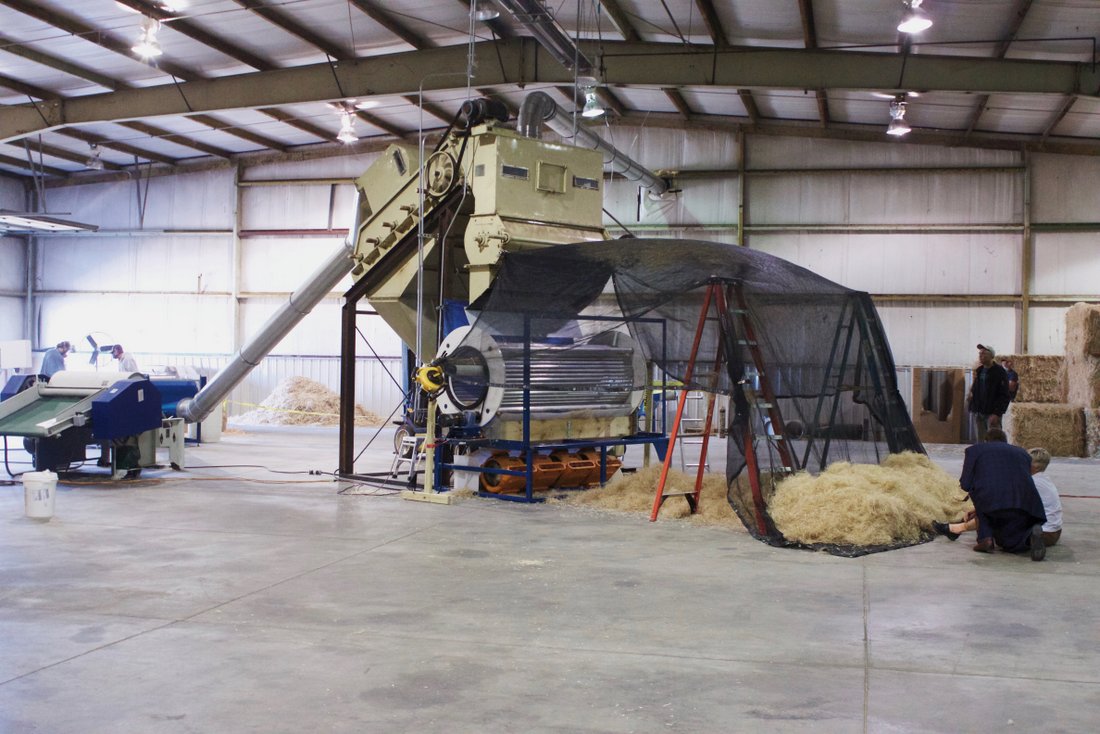
Coming from experience in mills that process wool, alpaca and other protein fibers, the open house served as a fascinating look into a world I know very little about – plant fibers are truly another species of textiles. I was joined by others from around the country who are excited about and investing in the possibilities and potential American-grown hemp can bring to our fiber systems: hemp farmers and yarn makers already acquainted with hemp, including Fibershed member Mary Pettis Sarley and Kentucky Cloth Project collaborator Kacie Lynn, as well as individuals looking for the possibility of investing in exciting new ventures, and a curious neighbor in Nebraska who, when asked about his reason for coming, simply replied he had heard there was an open house and wanted to see what went on in the large building.
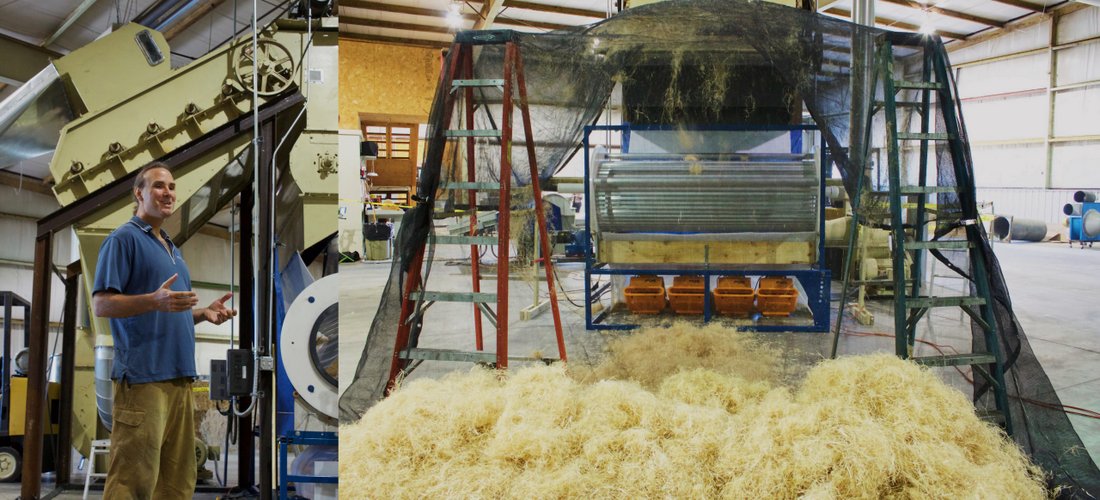
John Lupien, BastCore’s founder and president, greeted everyone at the beginning of the tour before going into detail about the machinery used in processing at the mill. With various stages of hemp processing accessible for us to see and touch, it became apparent that processing hemp is not a “one-size-fits-all” sort of endeavor, as it involves precise measurements and many trials to get the hemp to behave in the fashion needed for user end-products.

Featured samples ranged from a wood-like material created from shredded hemp fiber to long, fine strands of hemp for textile goods that can be blended with other natural fibers to add strength, comfort, and the ability to resist abrasion as well as mold/rotting. It’s the unique ability of hemp to shape-shift to meet users’ needs that puts John and his team at the forefront of figuring out how to fine tune equipment used for processing hemp. Creating consistent hemp fiber that can match the needs of where they are headed next is their biggest challenge, and one that they are actively investigating.
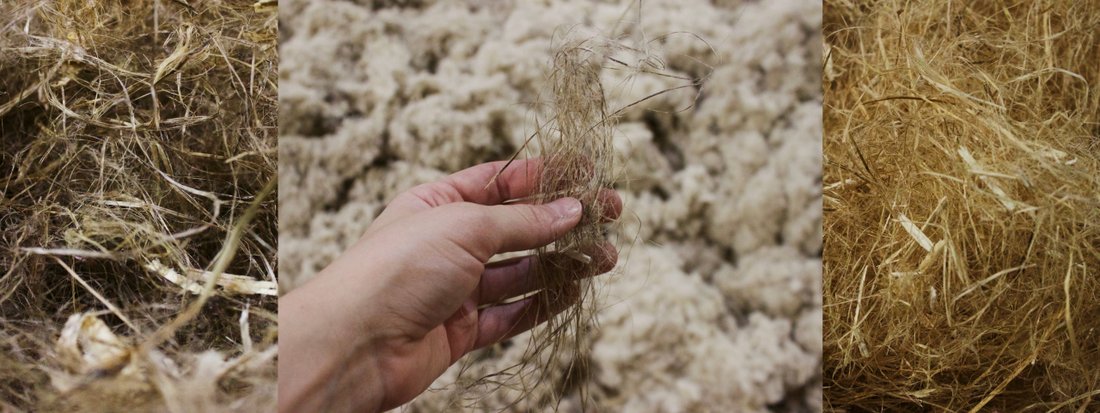
Hemp goes through a similar process to linen, called retting, using water to break down or rot the cellular tissues of the stem allowing the bundles of bast-fibers to separate from the stem of the plant. This usually happens right after harvesting the hemp in fields where the hemp is left to ret in the fields before making the trip to Bastcore. This dependence on the natural process of retting makes for bales of hemp coming in at different stages in the process, with some bales having been retted more than others. Contaminants in the bales contribute to the complex job John and his team have in getting the kind of hemp product that fiber mills are eager to work with. John is optimistic, though, and demonstrates hemp processing for us at the open house.
The largest machine, taking up half the building, is loud, with pipes leading in multiple directions. It takes the straw-like hemp and spits out, almost as if by some sort of Dr. Seuss-like magic, a fine, fluffy fiber that loosely resembles the “straw” going in, but has taken on a totally different form.
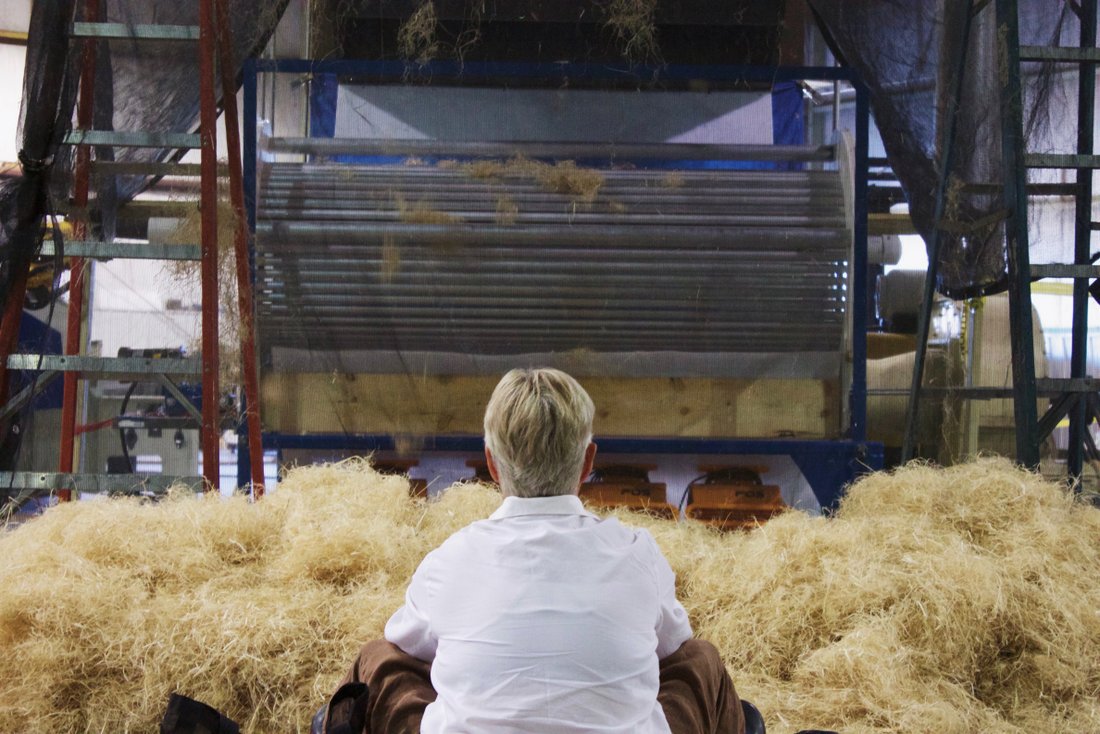
It’s here where the excitement really begins to build as others in the hemp community dream about end uses for the fiber, from clothing to building materials and everything in between. BastCore’s process puts these items into the realm of possibility, and John’s constant pursuit of creating a better fiber is the driving force behind this technology that makes American-grown hemp products an opportunity.
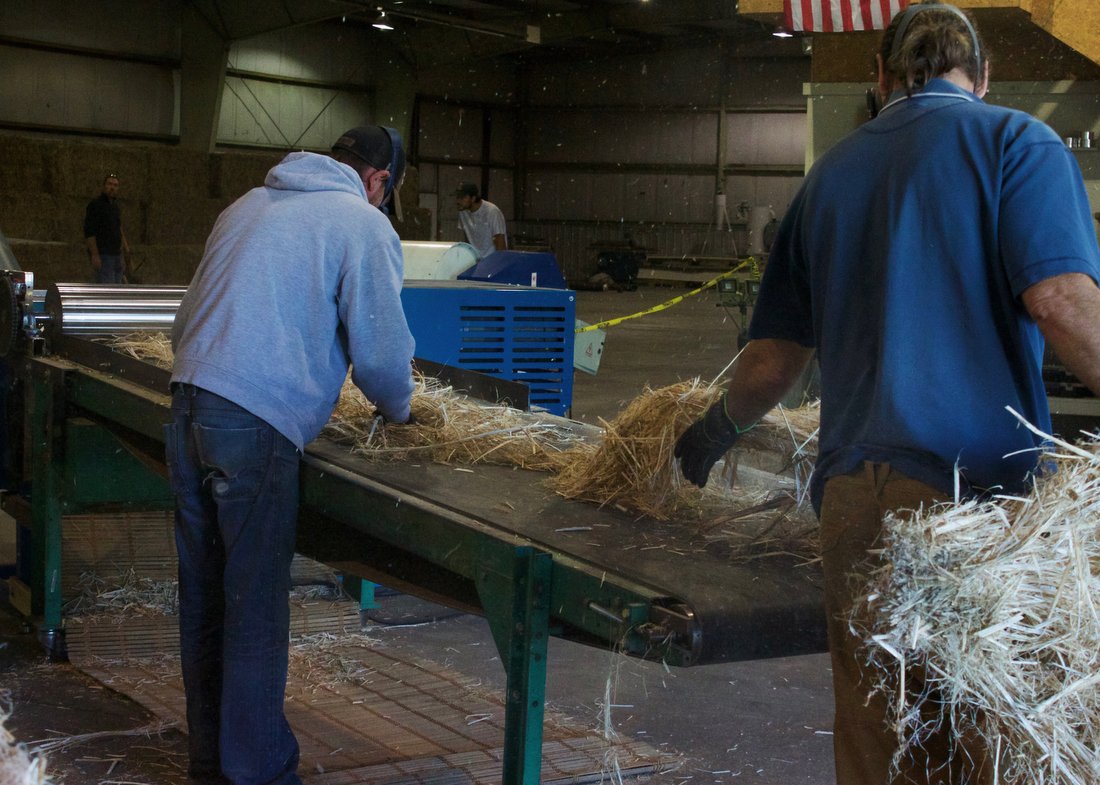
BastCore’s connection to our broader fiber system will create opportunity for larger retailers looking to make inventive blends of hemp and Climate Beneficial Wool. They will also offer small fiber mills the potential to create farm yarns that combine the beauty of protein fibers and cellulose fibers all grown within the same region.
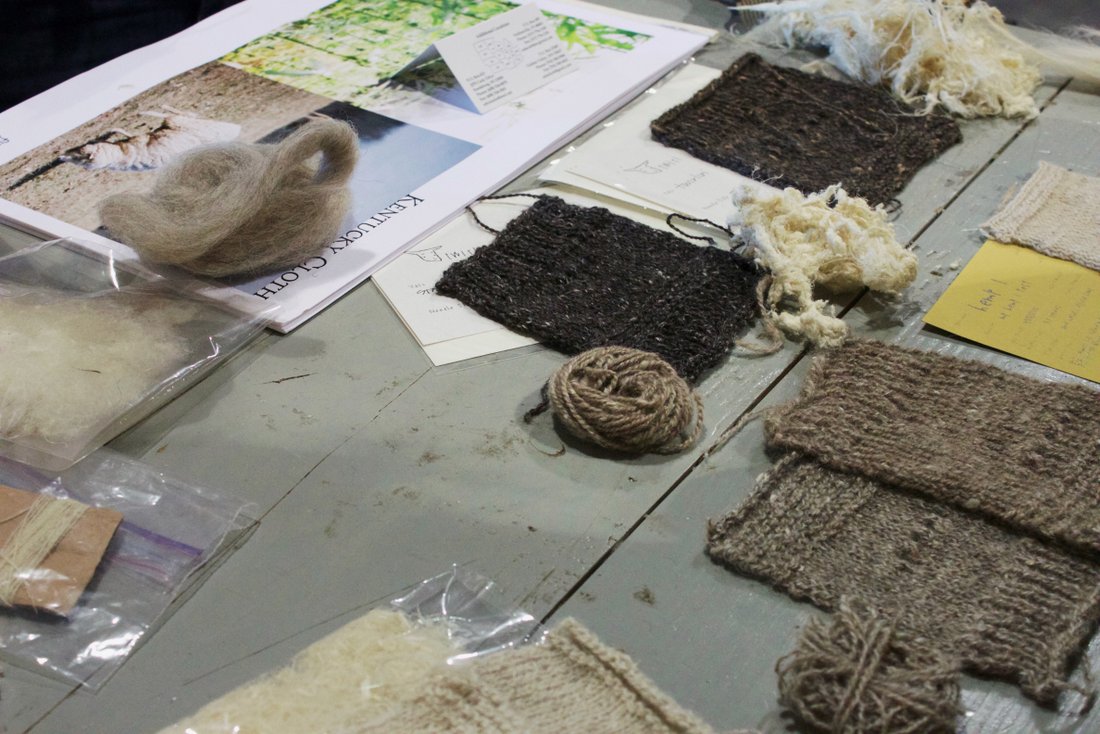
The future is bright for hemp products and what this natural fiber can do for our local fiber systems thanks to the small-yet-active hemp community across the country. As I drove back to Minnesota that evening, I thought about Nebraska for something altogether different than what I had expected – hemp processing. And I know it won’t be long until others get to know the work of Bastcore too.
Learn more about the potential for blending bast fibers and protein fibers to create durable, breathable, biodegradable goods, through the 2017 Wool & Fine Fiber Symposium panel on bast fiber blends, featuring BastCore founder John Lupien. Reserve a ticket today to attend the Symposium on November 11th in Point Reyes Station, or tune in to the livestream on this page. Information about hemp-wool and hemp-wool-alpaca blending processes and textiles is available in the Kentucky Cloth Lookbook. Learn more about BastCore at bastcore.com.





